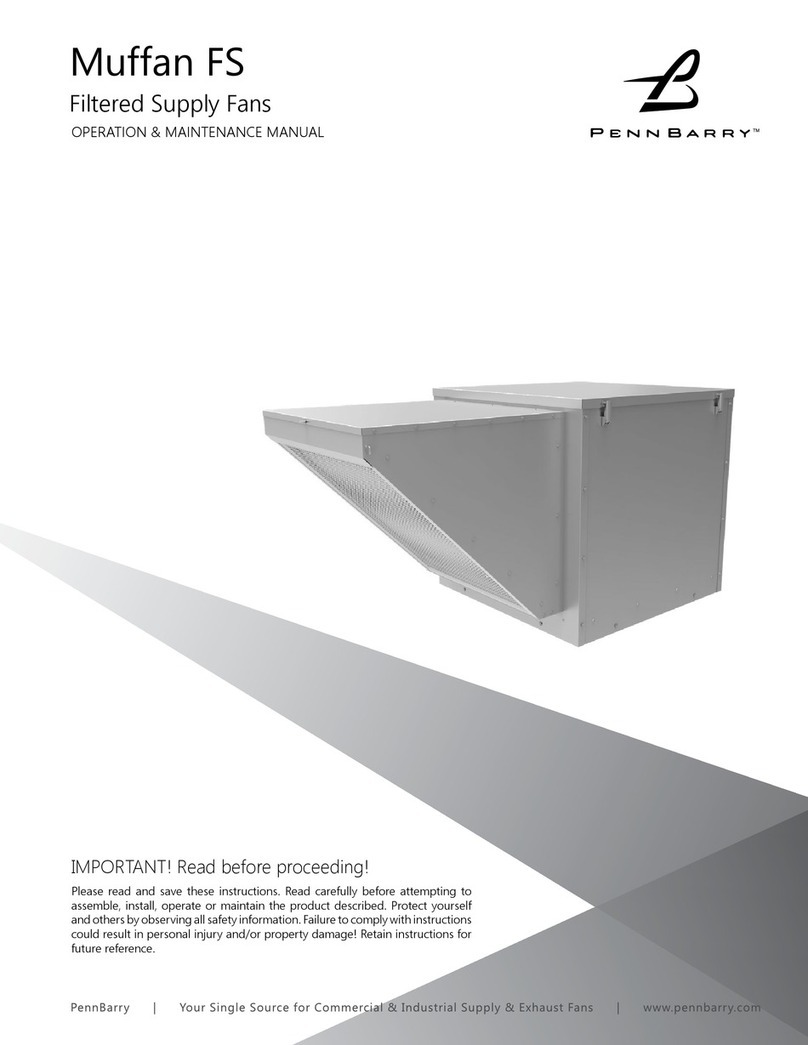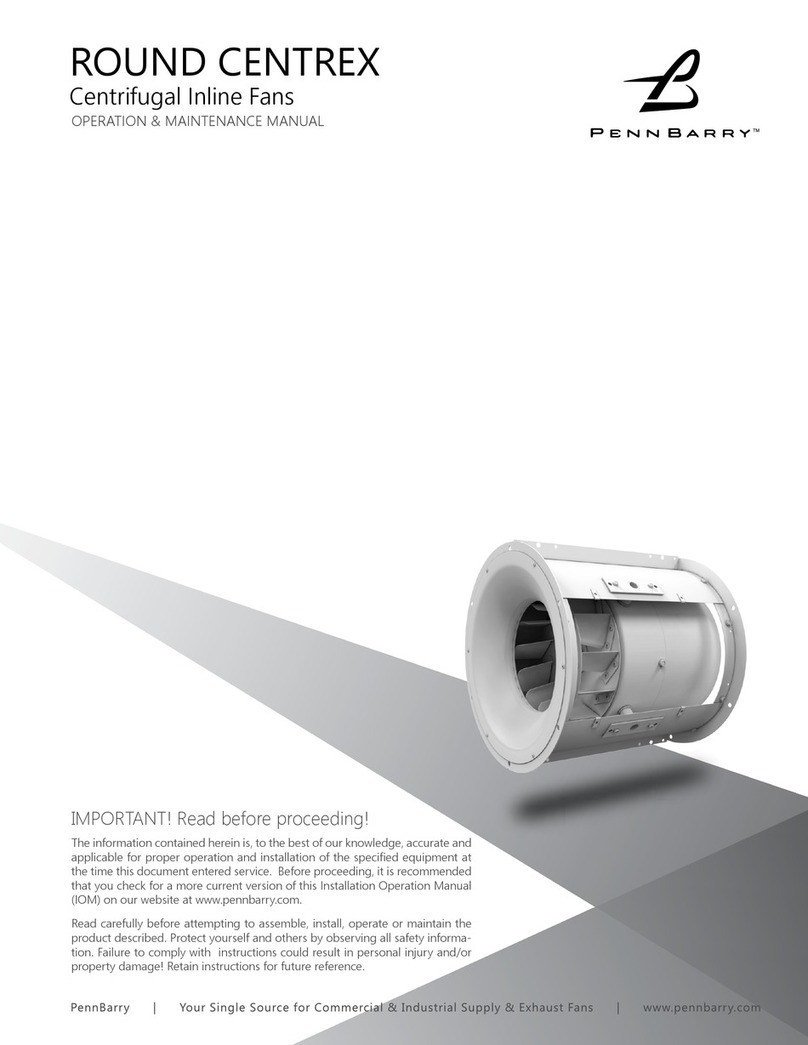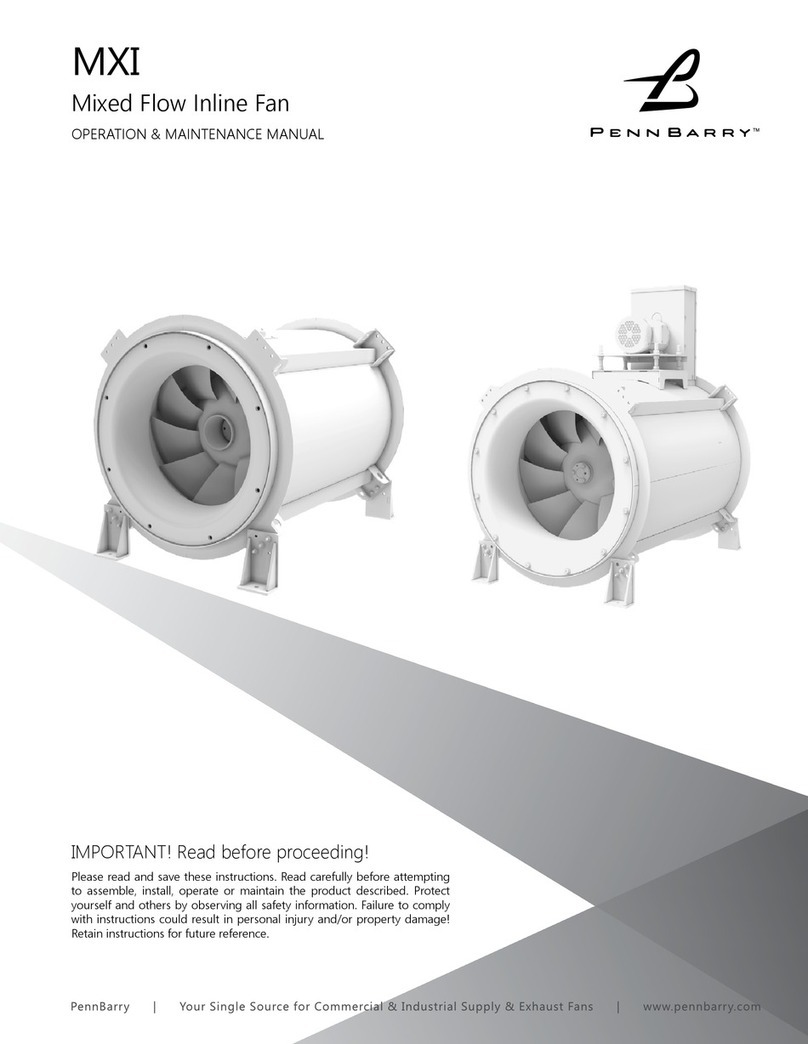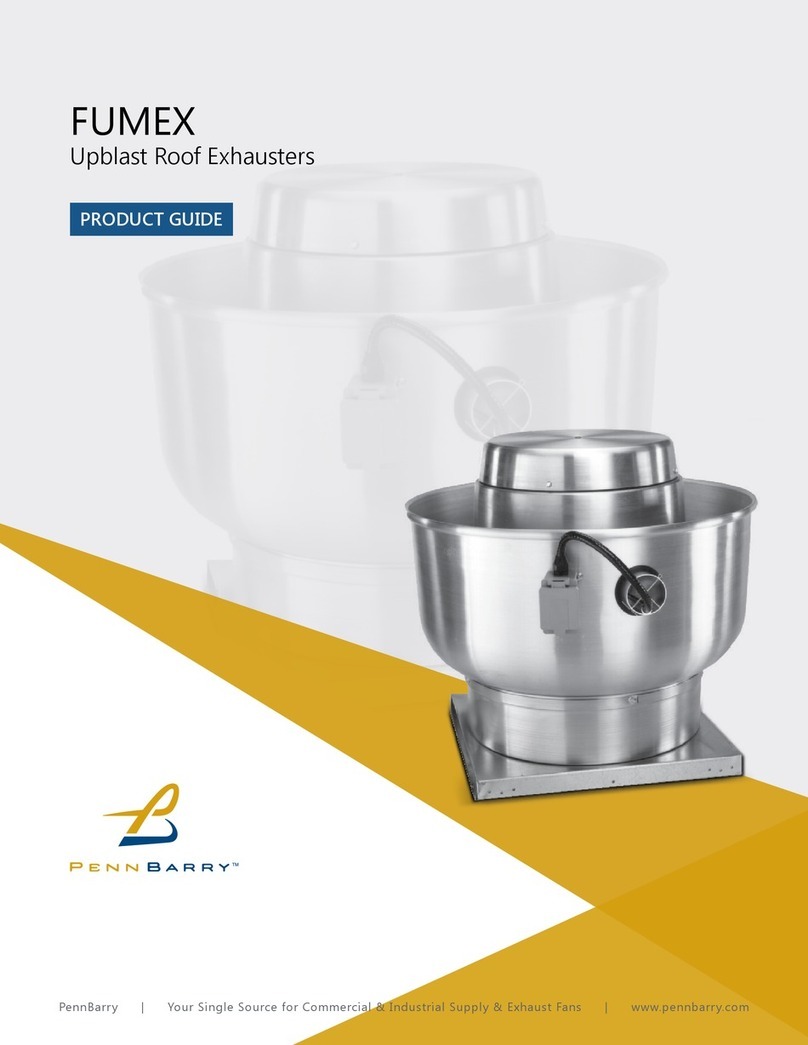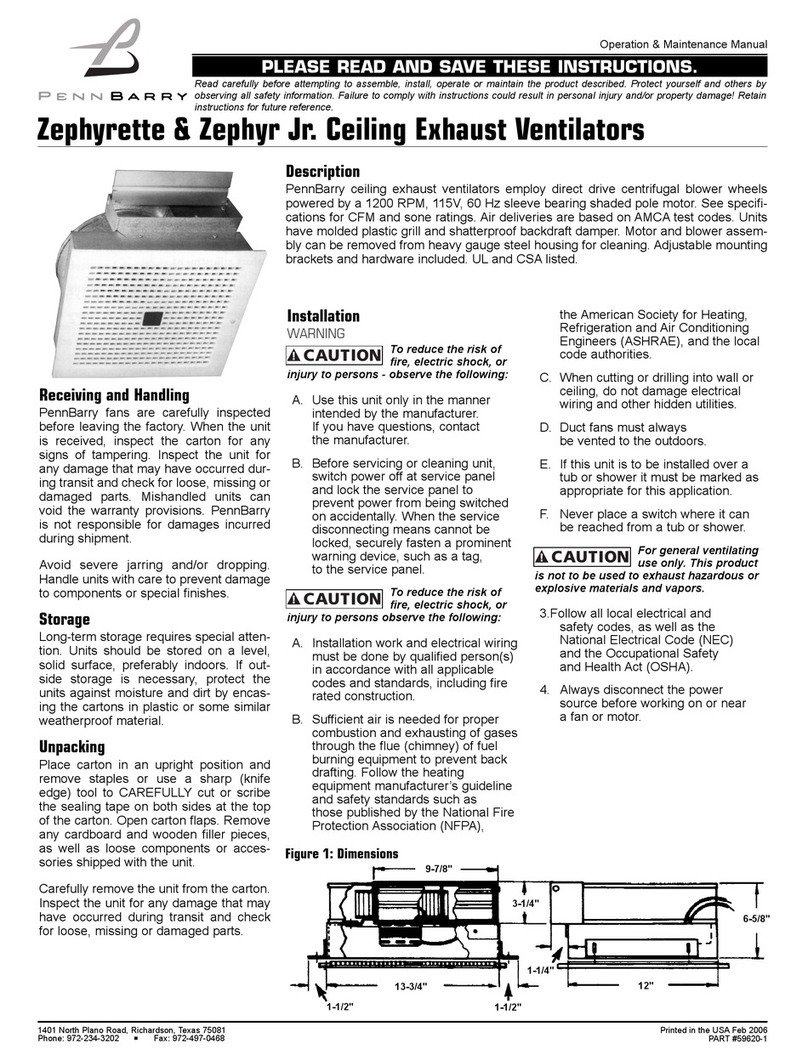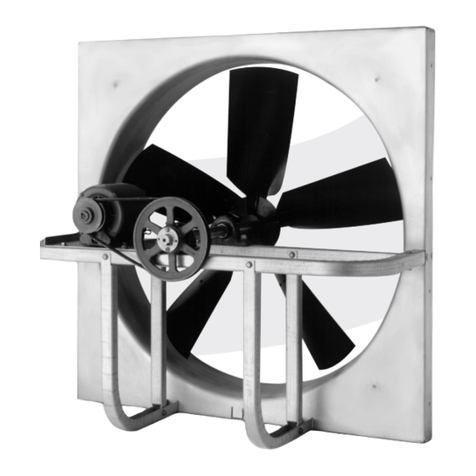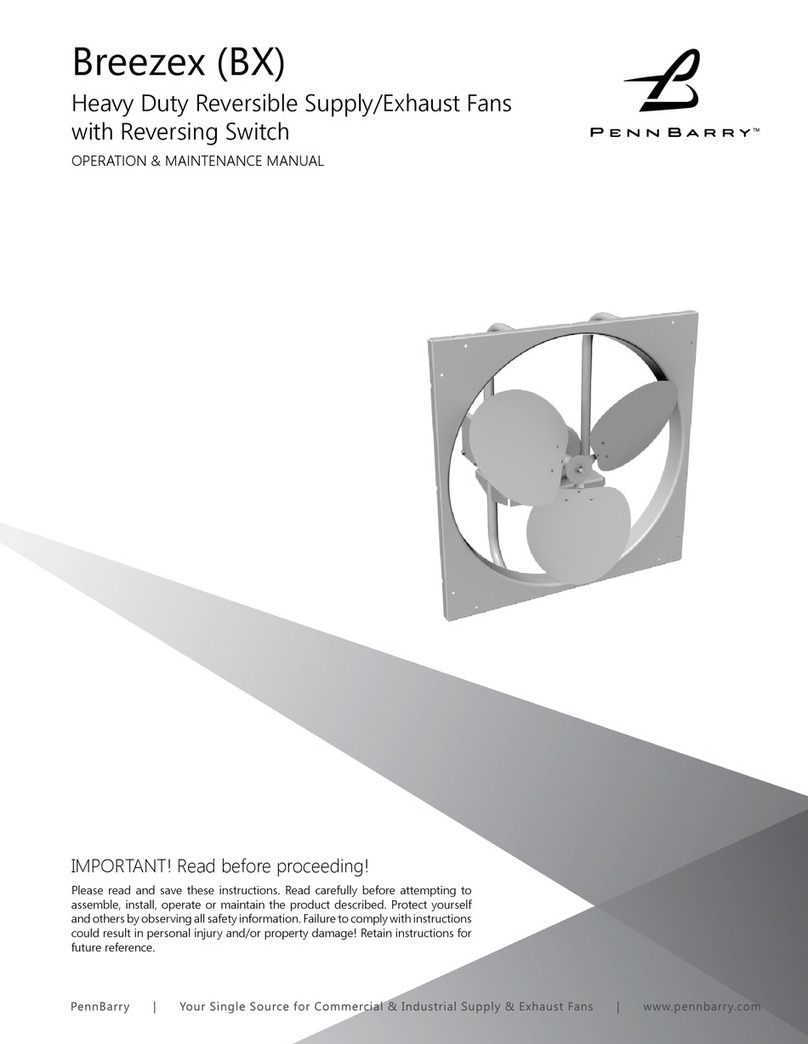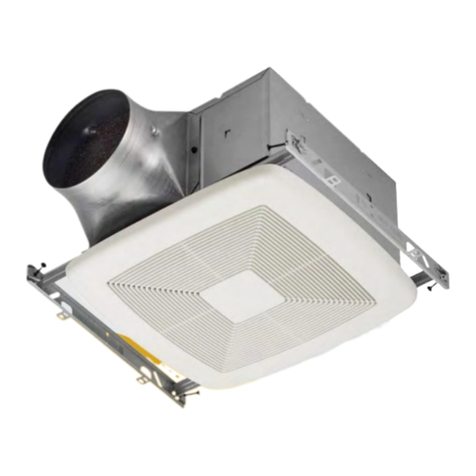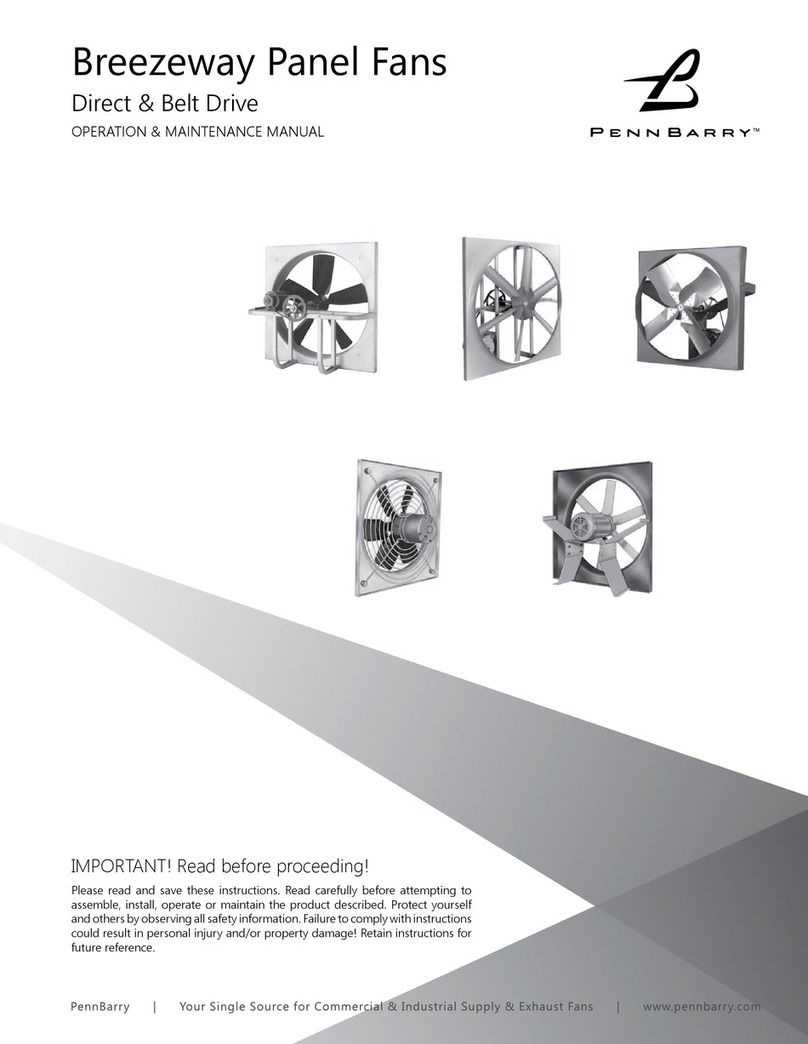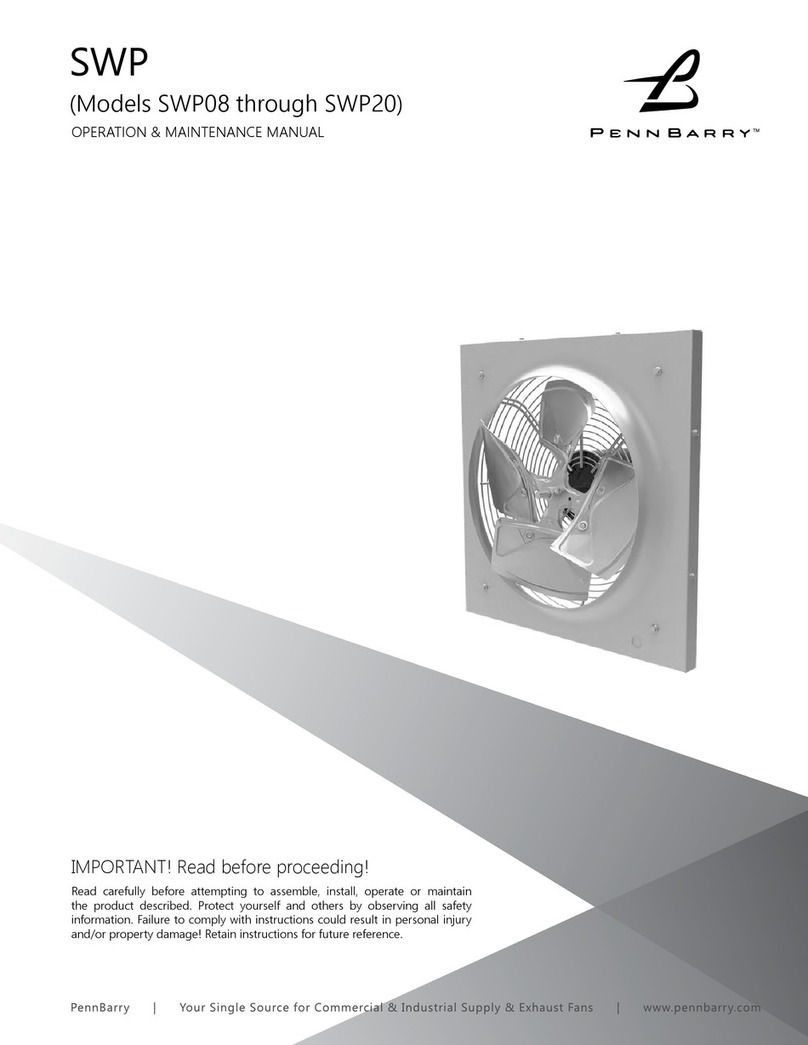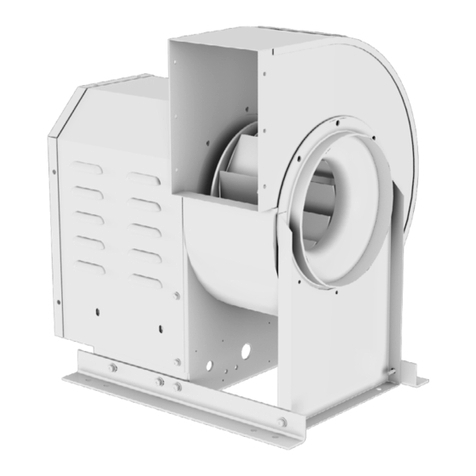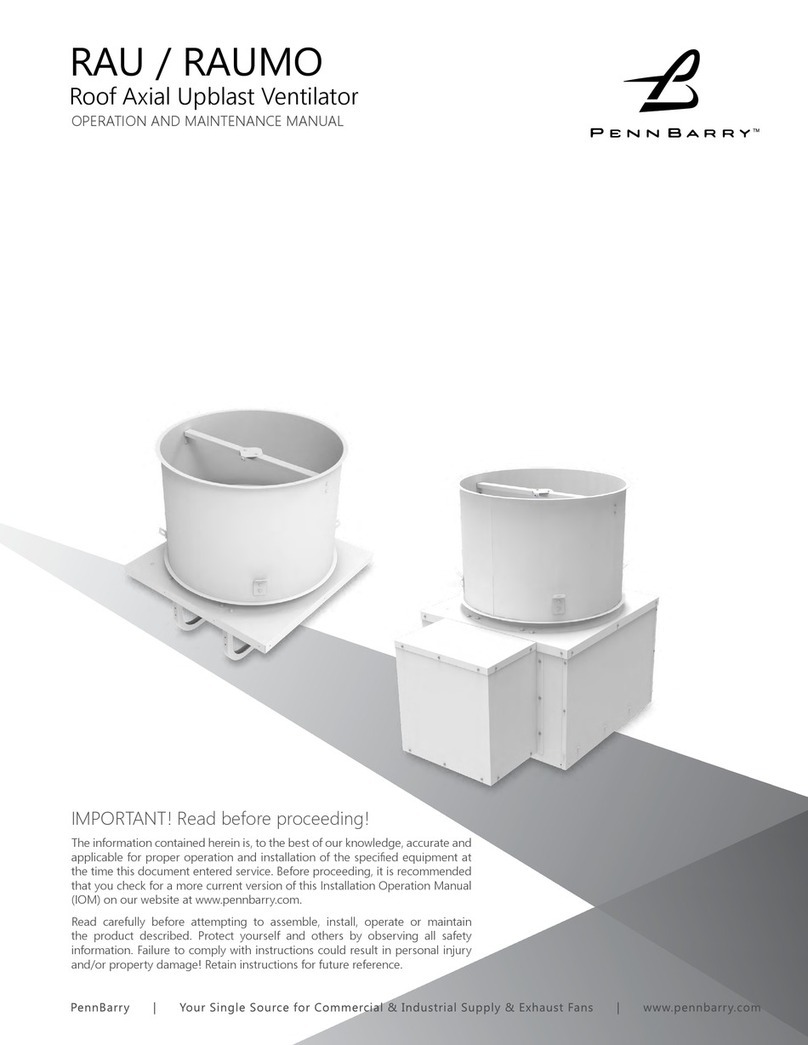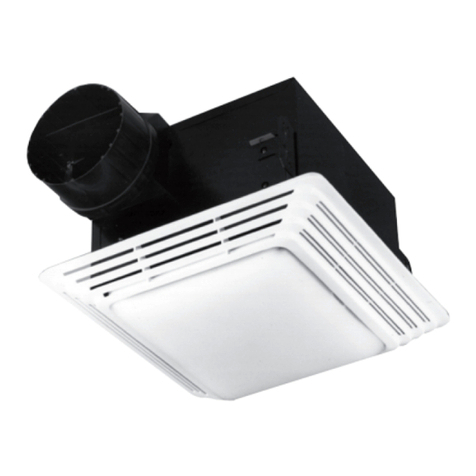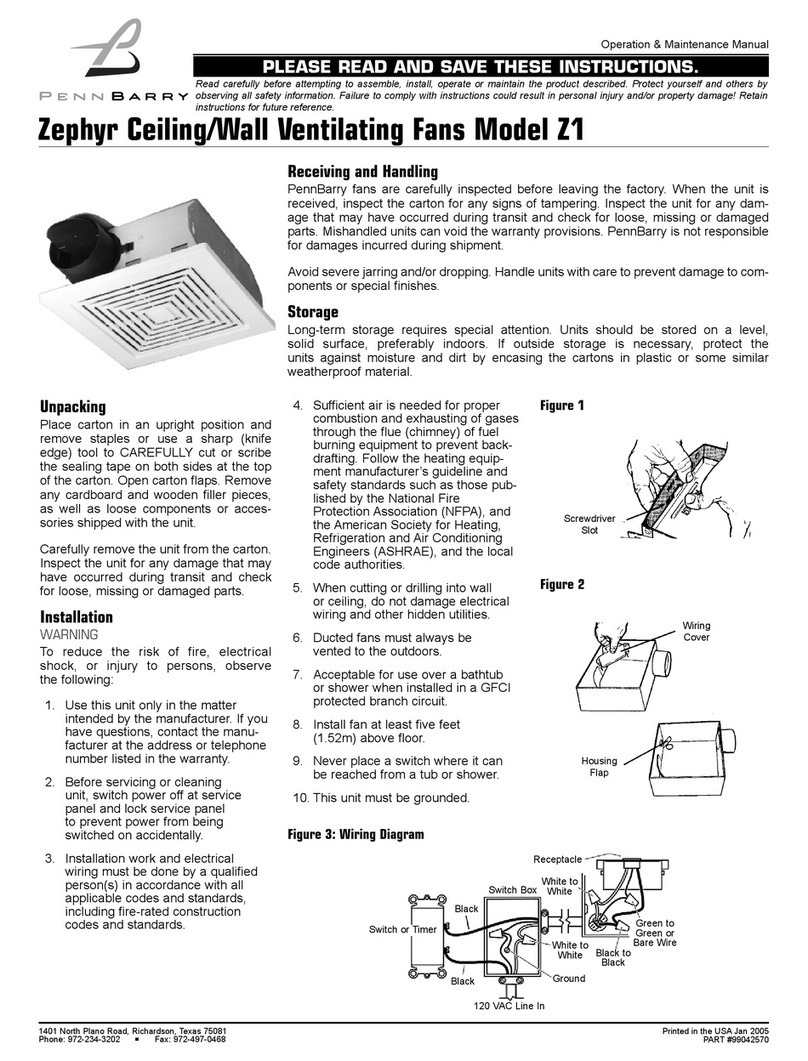
9www.PennBarry.com
Use safety practices when investigating fan or system performance problems. General safe practices and performance
troubleshooting guidelines can be found in AMCA Publication 410: Recommended Safety Practices for Users and Installers of
Industrial and Commercial Fans, and AMCA Publication 202-98 (R2011): Troubleshooting. Fan application and eld measurement
procedures can be found in AMCA Publication 201-02 (R2011): Fans and Systems, and AMCA Publication 203-90 (R2011): Field
Performance Measurement of Fan Systems.
Troubleshooting Performance Problems:
The lists below indicate possible areas to check when air or sound values do not meet expectations. Most fan problems can be
pinpointed to one of these common causes.
Air Capacity Problems:
1. Air resistance of system is not at design rating. If air resistance is lower than expected, airow may be higher, and the associated
horsepower lower. If air resistance is higher than anticipated, air volume will likely be lower.
2. Fan speed is not at design speed.
3. Air density is not at design values. Also, check air performance measurement techniques / procedures.
4. Mechanical air devices (e.g. dampers or lters) are closed or plugged.
5. Impeller is mounted improperly or is rotating in reverse.
6. Parts of system or fan have been damaged or need cleaning.
Noise Problems:
1. Fan is not at design point of operation, or fan is operating in an unstable ow region.
2. Bearings failed. Check bearings.
3. Supply voltage is high, or supply frequency is inconsistent. Variable frequency controllers can generate motor noise.
4. Objects which are installed in a high velocity airstream can generate noise. This includes ow sensors, turning vanes, etc.
5. Fan inlets develop non-uniform conditions.
6. Acoustics or sound measurement procedures are incorrectly administered.
Vibration Problems:
1. Misalignment of drive components.
2. Poor foundations (isolation base) or mounting structure (resonances).
3. Trapped foreign object in rotating components.
4. Damaged rotating components (bearings, shaft, fan, impeller).
5. Broken, loose or missing set screws.
6. Loose bolts.
7. Vibration transmitted by another source.
8. Water accumulating in airfoil blades.
9. Fan operation in stall or unstable ow region.
TROUBLESHOOTING GUIDELINES
NOTE: All fans manufactured by PennBarry are factory balanced prior to shipment. Improper handling and movement of the fan during shipment
may cause the rotating assembly to shift out of alignment. Balance should be checked once the fan is installed. If a nal trim balance is required, it
is the end user’s responsibility to bring the fan back to factory specications. Final trim balancing is not the responsibility of PennBarry.
